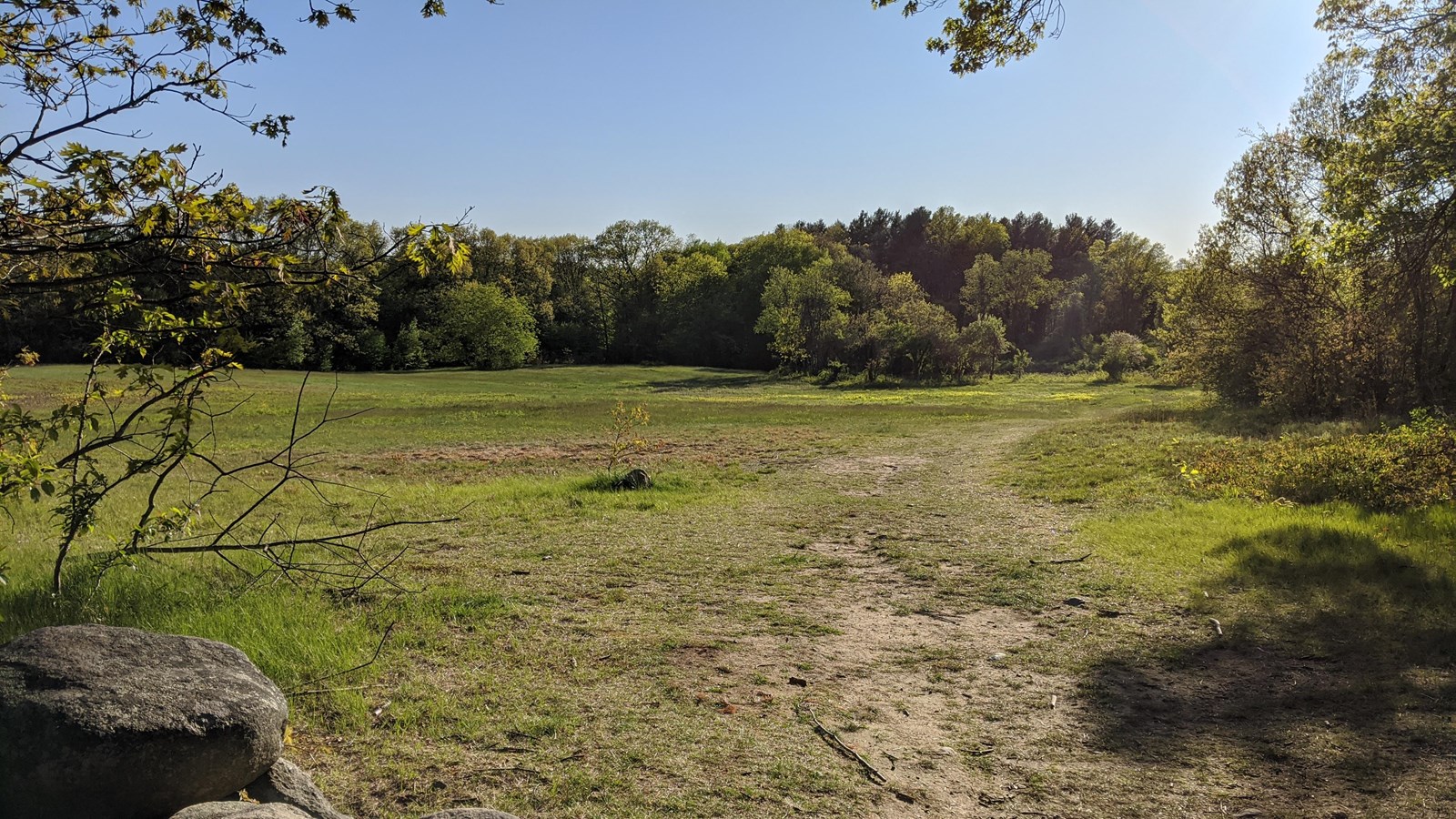Last updated: January 18, 2023
Place
Fiske Hill

NPS Photo
Historical/Interpretive Information/Exhibits, Parking - Auto, Pets Allowed, Scenic View/Photo Spot, Trailhead
The history of Fiske Hill stretches well beyond April 19, 1775. Human inhabitation of this region dates back over twelve thousand years. By the early seventeenth century, Algonquian people had been living along the Musketequid River, today known as the Concord River, for about a thousand years. Before contact with European settlers, these indigenous peoples hunted large game in the surrounding forests which included modern-day Fiske Hill.
When Puritan families ventured inland around 1635, they claimed the prosperous land along the Musketequid River as their own. In a short time, European settlers cleared large tracts of forest to established Concord Plantation, now Concord, Massachusetts. One settler, David Fiske II arrived at Concord Plantation around 1647 and claimed the elevated terrain now called Fiske Hill.
During the latter half of the 17th Century, David Fiske II and his wife Lydia established a homestead on the eastern slope of Fiske Hill at the western border of Cambridge, now known as Lexington. There the couple raised seven children including David Fiske III. Eventually the younger David built a farm near his father and together the Fiske's farmed the land until the end of their lives. When David Fiske III died in 1729 the farm passed to his son Ebenezer, who owned the land during the Revolutionary Period.
On April 19, 1775, the Bay Road cut through the Fiske property just yards north of the home. Unfortunately, illness incapacitated Ebenezer Fiske and posed a difficult problem for his son Benjamin and daughter-in-law Rebecca. As the sound of battle grew nearer the family decided they needed to find a safer location to shelter. Rebecca and Benjamin loaded Ebenezer into an oxcart and resolved to move the family away from the battle.
Shortly after the Fiske family fled, the running fight between colonial militia and British Regulars reached the farmstead. Utilizing scattered tree lots, stone walls, piles of rail fence, and boulders, colonial Militia staged themselves around the Bay Road. In the distance the long column of weary and battered redcoats struggled toward Lexington; their ammunition nearly exhausted and ranks on the verge of collapse. As they climbed the winding road on Fiske Hill, Reading Minuteman Edmond Foster recalled;
"The enemy were then rising and passing over Fiske's Hill. An officer, mounted on an elegant horse, and with a drawn sword in his hand, was riding backwards and forwards, commanding and urging on the British troops. A number of Americans behind a pile of rails raised their guns and fired with deadly effect. The officer fell, and the horse took fright, leaped the wall, and ran directly towards those who had killed his rider. The enemy discharged their musketry in that direction, but their fire took no effect."- Edmund Foster
To avoid complete disaster the Regulars rushed onward, leaving their dead and wounded strewn across the landscape. Near the Fiske House, some individuals stopped either to enter the home or retrieve water from the well. In one intense moment, Acton militiaman James Hayward came face to face with a British Regular exiting the house. According to a local legend recorded fifty years later, the British soldier cried out, “You are a dead man,” and Hayward replied, “and so are you!”. Both fired and fell. The British soldier was dead, and Hayward was mortally wounded. Shortly after the fighting passed, Rebecca Fiske and her family ventured home only to find it in disaster. A dead Redcoat lay across the front step, while three horribly wounded men weltered in pools of blood just inside their front door.
After the battle, the story of Fiske Hill and the bravery of James Hayward became critical aspects of the April 19, 1775 narrative. Although many accounts of the action remain speculative, those stories remain prominent in local remembrance. During the 19th Century local citizens also erected a monument to Hayward near the supposed well, while the grave of two British soldiers faded into obscurity nearby.
The Grave of British Soldiers on Fiske Hill
Ebenezer Fiske House Site
